This post may contain affiliate links for which I earn a small commission at no extra cost to you. For more info, check out my Disclosure Policy. Thank you for your support!
I went to see a doctor a little while ago, and she suggested sending me for a DEXA scan, which measures your bone density.
Out of however many years (at least ten!?) I have been at the same surgery, she is the first doctor to suggest giving me an annual check up or sending me for a DEXA scan, but grumbling aside (I could go on all day) let me explain what exactly a DEXA scan is for.
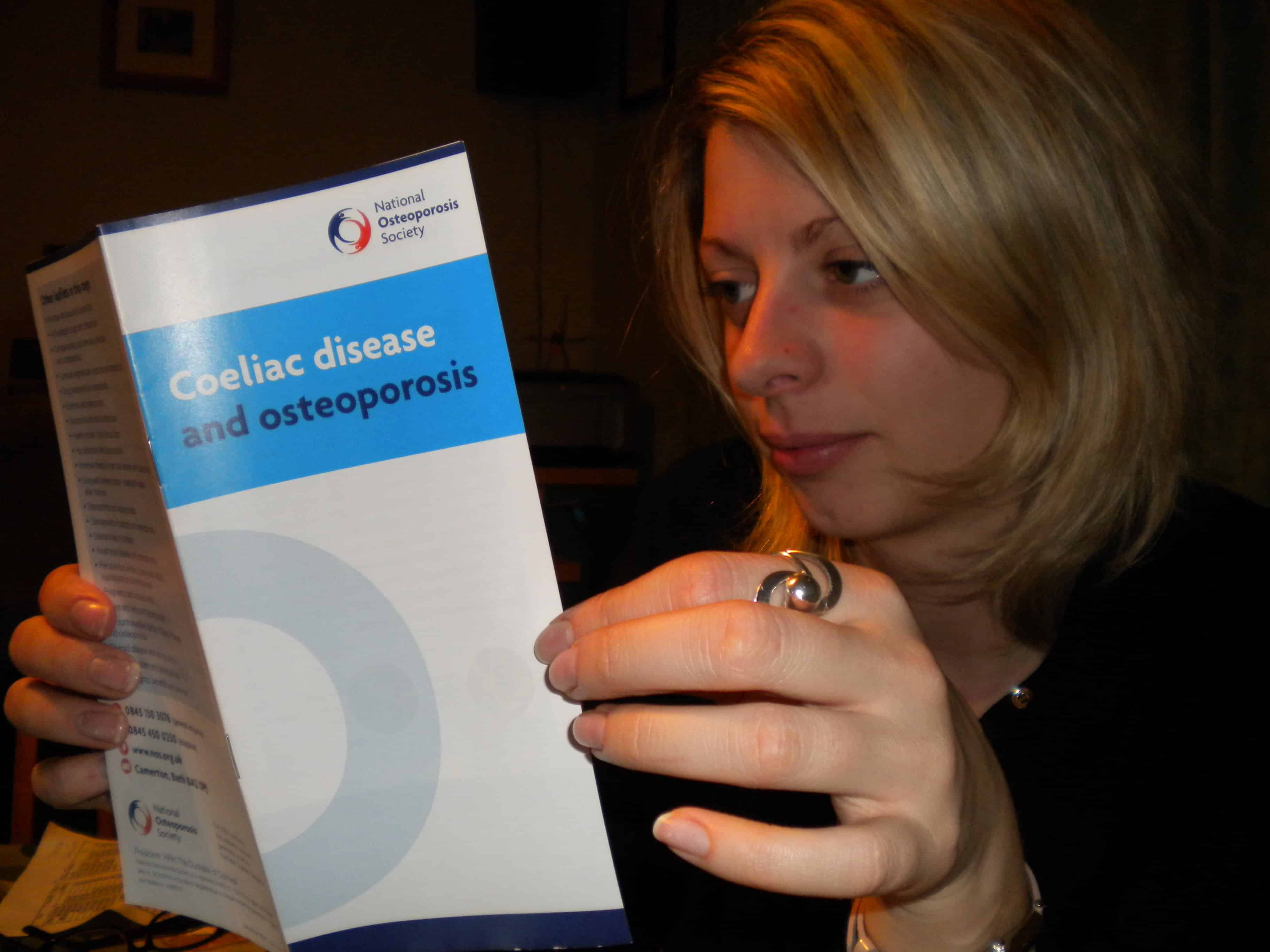 If left untreated, coeliac disease can lead to osteoporosis, aka ‘brittle bones’, due to the fact the damages villi in your small intestine stop you from absorbing calcium in your food.
If left untreated, coeliac disease can lead to osteoporosis, aka ‘brittle bones’, due to the fact the damages villi in your small intestine stop you from absorbing calcium in your food.
When I was diagnosed, osteoporosis was briefly mentioned in passing, but nowadays, newly diagnosed coeliacs are being sent to have a DEXA scan.
These scans are a little like x-rays, but with only a teeny tiny amount of radiation being omitted.
When I went for my scan, the person doing it sat with me and explained a little about why I was there.
He gave me a list of foods to eat which are high in calcium, and explained how the scan would show if my bones were dense enough.
The scan itself was quick and painless – I just lay on a table while the machine went about its business scanning my hips, spine and forearm.
I should get the results soon, but the preliminary results seemed to be OK, so I’m not worrying!
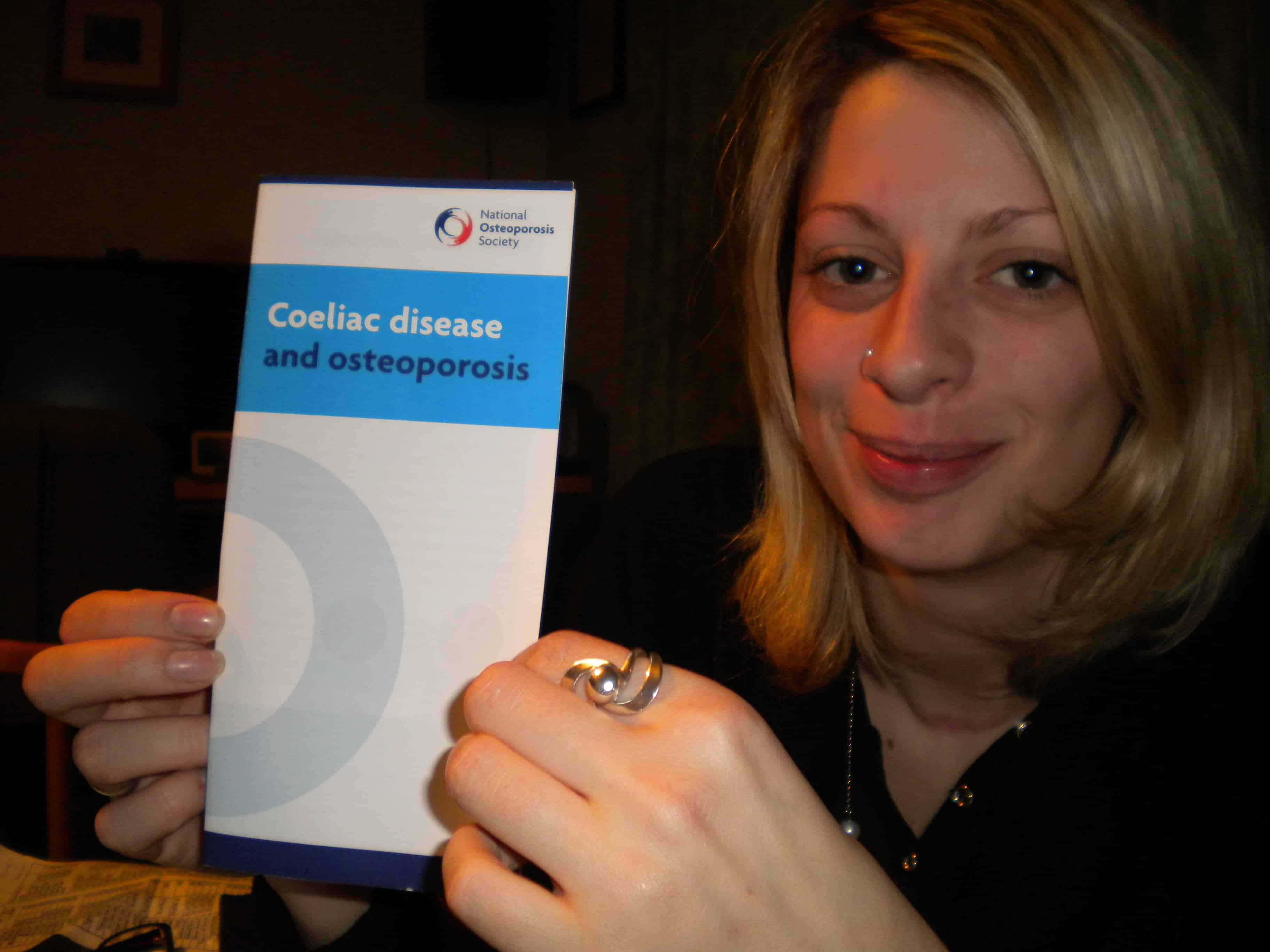 However, the one thing I did take away from this appointment, was that exercise is important for your bones.
However, the one thing I did take away from this appointment, was that exercise is important for your bones.
So as if I didn’t need anymore reason to go to the gym, now my bones need me to!
Brisk walking and lifting weights are great bone-strengtheners, and if you have slightly weaker bones then you can help to increase their strength by exercising regularly.
Worried about osteoporosis and want some more info? Visit Coeliac UK ‘s page on osteoporosis and coeliac disease.

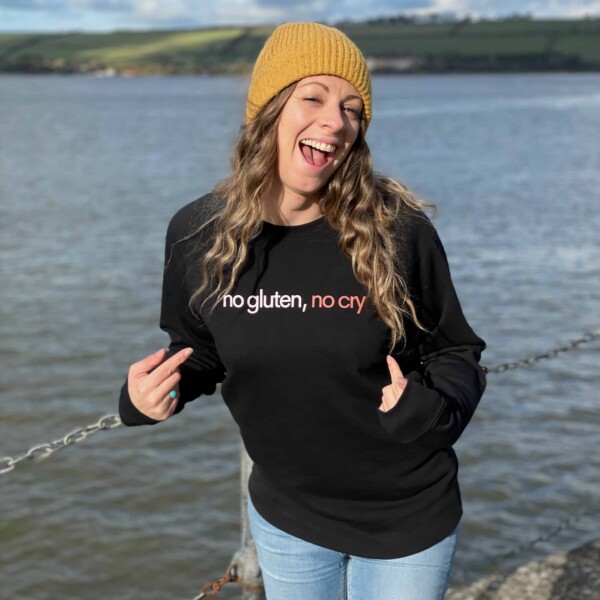
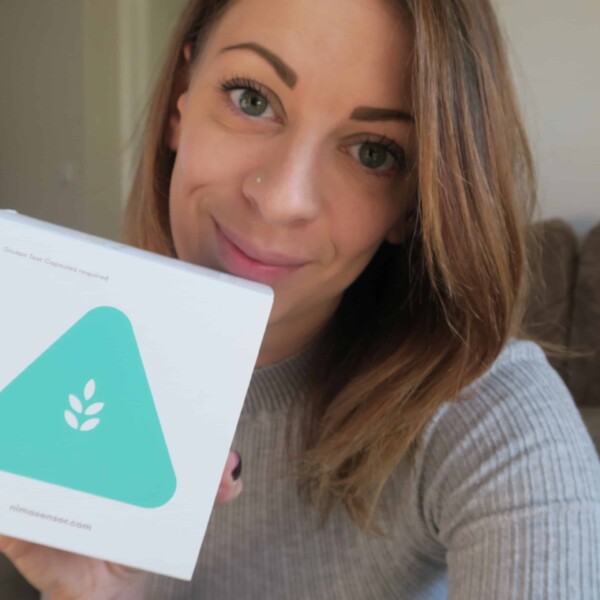
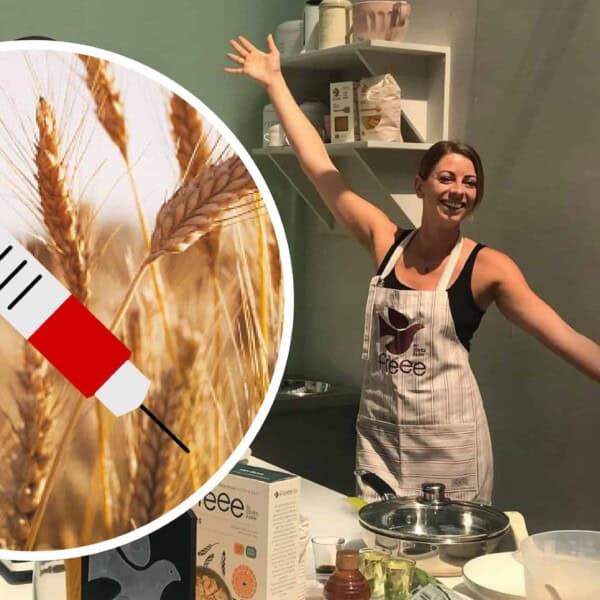
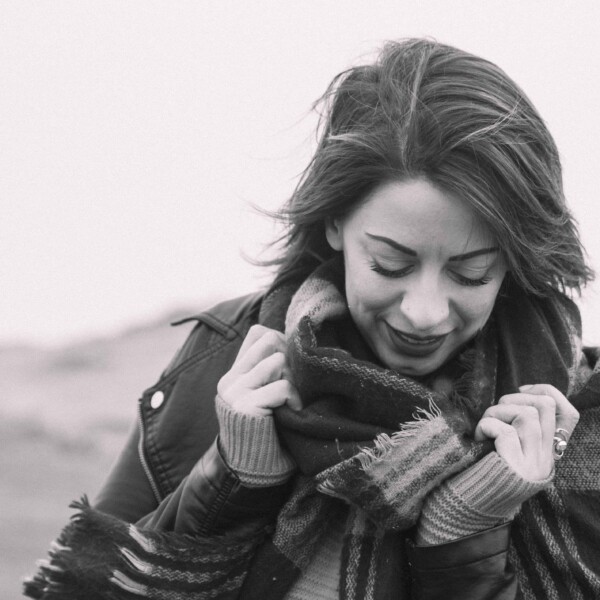

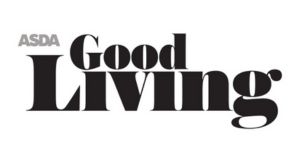
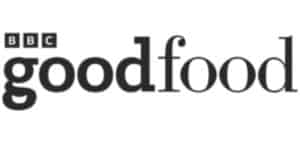
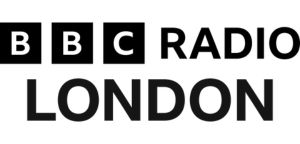
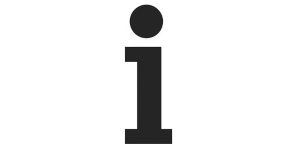
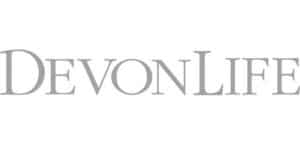


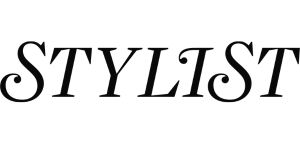
Hi Sarah,
May I advise your readers like me who are coeliacs, or who know someone who suffers from coeliac desease or dermatitis herpetiformis, that food products marked as gluten free or with the crossed-grain symbol are now not necessarily safe for all coeliacs to eat.
Any food or drinks containing wheat, rye and barley is not gluten free but recently (early 2012 I think), the Coeliac Society has allowed oats to be deemed gluten free albeit they were previously considered unsafe for coelics. However, oats contain a protein called avenin and at least 5% of coeliacs cannot tolerate avenin and they should not eat oats.
Sarah Sleet, CEO of the Coeliac Society, confirmed the 5% figure in a recent email to me and stated it was up to GP’s to advise patients of the risk of taking the crossed grain symbol and gluten free markings at face value. From what she says, it appears that the only way to find out if you are allergic to avenin is to risk making yourself ill eating oats. I did and was sick for days.
Iain Maddox
East Linton
Osteoporosis can be easily prevented if you just take enough calcium and magnesium on your daily diet. cheese has enough calcium for your daily needs.:;*.:
Warmest regards
http://www.prettygoddess.com